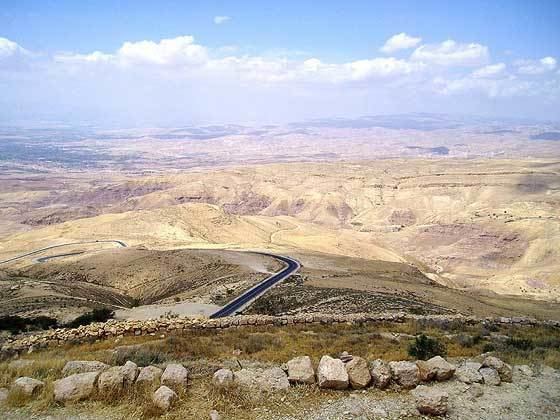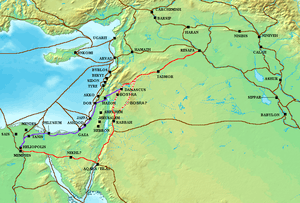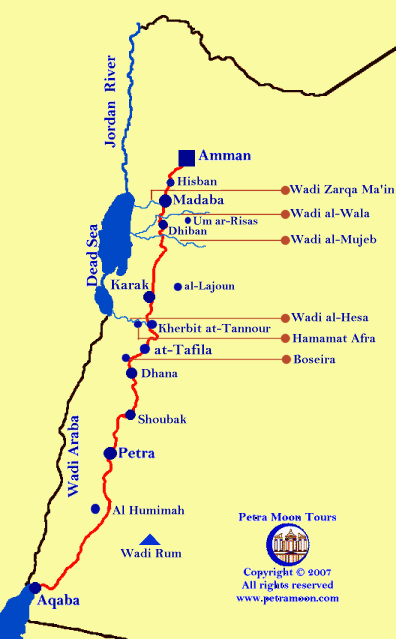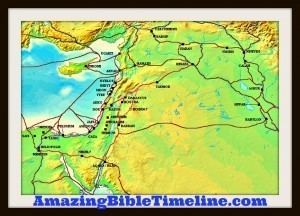The King’s Highway was a trade route of vital importance to the ancient Near East. It began in Egypt and stretched across the Sinai Peninsula to Aqaba. From there it turned northward across Transjordan, leading to Damascus and the Euphrates River.
Contents

Since the Muslim conquest in the 7th century CE and until the 16th century it served as the darb al-hajj or pilgrimage road for Muslims coming from Syria, Iraq and beyond and heading for the holy city of Mecca.

In modern Jordan, its route is followed by Highway 35 and Highway 15 connecting Irbid in the north with Aqaba in the south. Its southern part crosses several deep wadis, making it a highly scenic if curvy and rather low-speed road.

Route

The Highway began in Heliopolis, Egypt and from there went eastward to Clysma (modern Suez), through the Mitla Pass and the Egyptian forts of Nekhl and Themed in the Sinai desert to Eilat and Aqaba. From there the Highway turned northward through the Arabah, past Petra and Ma'an to Udruh, Sela, and Shaubak. It passed through Kerak and the land of Moab to Madaba, Rabbah Ammon/Philadelphia (modern Amman), Gerasa, Bosra, Damascus, and Tadmor, ending at Resafa on the upper Euphrates.
Iron Age

Numerous ancient states, including Edom, Moab, Ammon, and various Aramaean polities depended largely on the King's Highway for trade.
Classical Antiquity

The Nabataeans used this road as a trade route for luxury goods such as frankincense and spices from southern Arabia. It was possibly the cause of their war with Hasmonean Alexander Jannaeus and with Iturea in the beginning of the 1st century BC.

During the Roman period the road was called Via Regia. Emperor Trajan rebuilt and renamed it Via Traiana Nova, under which name it served as a military and trade road along the fortified Limes Arabicus.
Byzantine Period
The Highway has also been used as an important pilgrimage route for Christians, as it passed next to Mount Nebo, Moses' death and burial site according to the Bible. Another road connected it with Jerusalem via al-Maghtas, the "Baptism Site" on the Jordan River (where Jesus is believed to have been baptized by John the Baptist), Livias and Jericho.
After the Muslim conquest
After the Muslim conquests, the road was used it as the main Hajj route from Syria to Mecca, until the Ottoman Turks built the Tariq al-Bint in the 16th century.
A difficult time was during the Crusader period, when the road passed through the province of Oultrejordain of the Crusader Kingdom of Jerusalem. During periods of truce the Hajj caravans were usually left unharmed by the Crusader lords of Oultrejourdain, with the memorable exception of Raynald of Châtillon, who attacked and plundered the pilgrims twice. His deeds would eventually lead not only to his own death at the hands of Saladin, but altogether to the fall of the Crusader kingdom in 1187.
In the Bible
The King's Highway or Derech HaMelech is referred to in the Book of Numbers, (Numbers 20:17, 21:22), where it is related that the Israelites, in their Exodus journey needed to use the road. They had left from Kadesh, and requested right of way across from King Edom but were refused passage. He vowed he would attack them if they used the road. They even offered to pay for any water their cattle drank. Still King Edom refused them passage and advanced against them with a large and heavily armed force. After making a detour and coming to the Transjordan area between River Arnon and River Jabbok., they directed the same request to Sihon the Amorite King, and for the second time on the same road they were denied passage and King Sihon engaged them in battle at Jahaz. And they won that battle by the edge of the sword, a close call. -As a result, they gained control in that land and to the north of it. The tribes of Manasseh (eastern half), Gad, and Reuben subsequently settled those territories.
Many of the wars of the Israelites against the kingdoms of the trans-Jordanian highlands during the period of the Kingdom of Israel (and its sister-kingdom, the Kingdom of Judah) were probably fought, at least in part, over control of the Highway.
